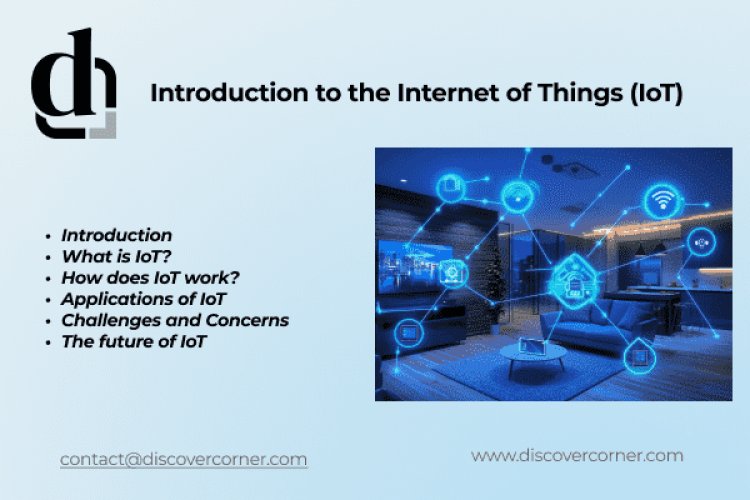Introduction to the Internet of Things (IoT)
Discover the transformative power of the Internet of Things (IoT) and how it is reshaping our world. Learn about IoT's core concepts, its impact on smart homes, healthcare, industry, and more. Explore how IoT devices collect and analyze data to enhance efficiency and productivity, while also addressing challenges such as security and interoperability. Understand the future potential of IoT with advancements in 5G and AI.

What is the Internet of Things (IoT) all about?
To put it simply, the Internet of Things is a worldwide technology revolution resulting in a transformation of our life with which we live our lives--how we work and play, in what ways with and how much freedom from any actual physical contact around us at all times.At the same time, however, this transformation is also inevitable; it will be impossible even to name big data and value without taking into account IoT technology.But just how meaningful is this interconnectedness on such an enormous scale really for us all?
What is IoT?
At its core, the Internet refers to physical objects—devices, vehicles, machines, etc.—embedded with sensors, software, and other technologies to connect and exchange data with other devices and systems via the Internet on. more effective systems. Imagine your thermostat adjusting the temperature based on your daily activity, or your refrigerator alerting you when you’re not buying enough. These are simple examples of how IoT has been seamlessly integrated into our daily lives. From smart homes to industrial automation, IoT applications are vast and ever-expanding.
How does IoT work?
IoT devices are equipped with sensors and microprocessors that collect data from their environment. This data is then processed and transmitted over the Internet to a central system or other devices. The real power of IoT lies in its ability to analyze this data in real time, delivering actionable insights that can lead to more informed decision making and automated responses In a smart city, for example, IoT sensors could monitor traffic and adjust traffic signs to reduce congestion, or detect air quality levels and trigger alerts when pollution reaches a certain level risky These systems operate autonomously, where minimal human intervention is required, and therefore IoT is generally associated with increased productivity and cost savings.
Applications of IoT
IoT implementation There are virtually no limits to the potential applications of IoT. Here are some of the key areas where IoT is having a big impact:
Smart Homes: Smart thermostats, security systems, lighting and other IoT-enabled devices allow homeowners to remotely monitor and control their home environment
Healthcare: IoT is revolutionizing healthcare with wearable devices that monitor vital signs, smart medication dispensers, and remote controls that allow doctors to diagnose and treat patients at remotely so.
Industrial IoT (IIoT): IoT in manufacturing is used to optimize operations, monitor equipment for predictive maintenance, and improve supply chain management.
Agriculture: Farmers are using IoT for precision farming, deploying sensors to monitor soil conditions, climate and crop health to maximize yields and reduce waste
Transportation: Connected cars and intelligent mobility systems are improving road safety, reducing fuel consumption and enabling new forms of mobility such as autonomous vehicles.
Challenges and Concerns
While the benefits of IoT are immense, there are also challenges that need to be addressed. Security is a key concern, as connected IoT devices make them potential targets for cyberattacks. Developing robust security measures to ensure data privacy is critical to the widespread adoption of IoT.
Interconnectivity between IoT devices and platforms is another challenge. As the ecosystem matures, ensuring that devices from different manufacturers can seamlessly communicate and work together is essential for a cohesive IoT network.
The future of IoT is incredibly promising. The proliferation of 5G networks will increase the connectivity and speed required for IoT devices to function properly, and will allow for sophisticated applications including advances in artificial intelligence and machine learning to provide the IoT systems have been able to get smarter, learning from the data they collect to improve their operations over time.
As IoT continues to evolve, it will undoubtedly play a key role in shaping the future of technology and our connection to the world. Whether it’s making our cities smarter, our homes more efficient, or our jobs more productive, it’s sure to change our lives in ways we’re only beginning to understand.













